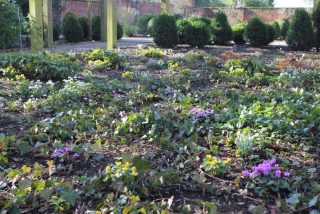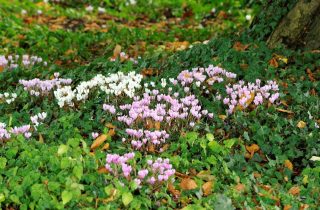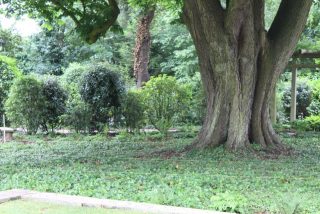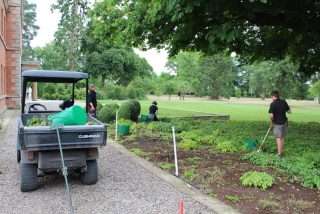The “Tree of Doom”
Morton Hall is fortunate to have a listed white horse chestnut (Aesculus hippocanastum) on the East Terrace, which is more than 200 years old.

The tree’s excellent health is due to its sheltered position and the high water table at its roots. Its condition is further boosted by raising the canopy every five years to increase air circulation. Raising the canopy also enables us to plant spring and autumn bulbs beneath it. In early spring, we have winter aconites (Eranthis hyemalis), snowdrops (Galanthus nivalis ‘Flore Pleno’) and cyclamen coum, followed by Cyclamen repandum, Anemone blanda, Erythronium ‘Pagoda’ and summer snowflakes (Leucojum aestivum). In late summer and early autumn, we have cyclamen hederifolium.


As much as we cherish our majestic chestnut, we call it the ‘Tree of Doom’ because of the arduous task of weeding the massive area beneath it. We try to subdue the weeds with ivy; however, in June and October, we prepare ourselves for some hours of hard labour. To make the task manageable, we mark out equal ‘lanes’ with string and assign one to each team member.


